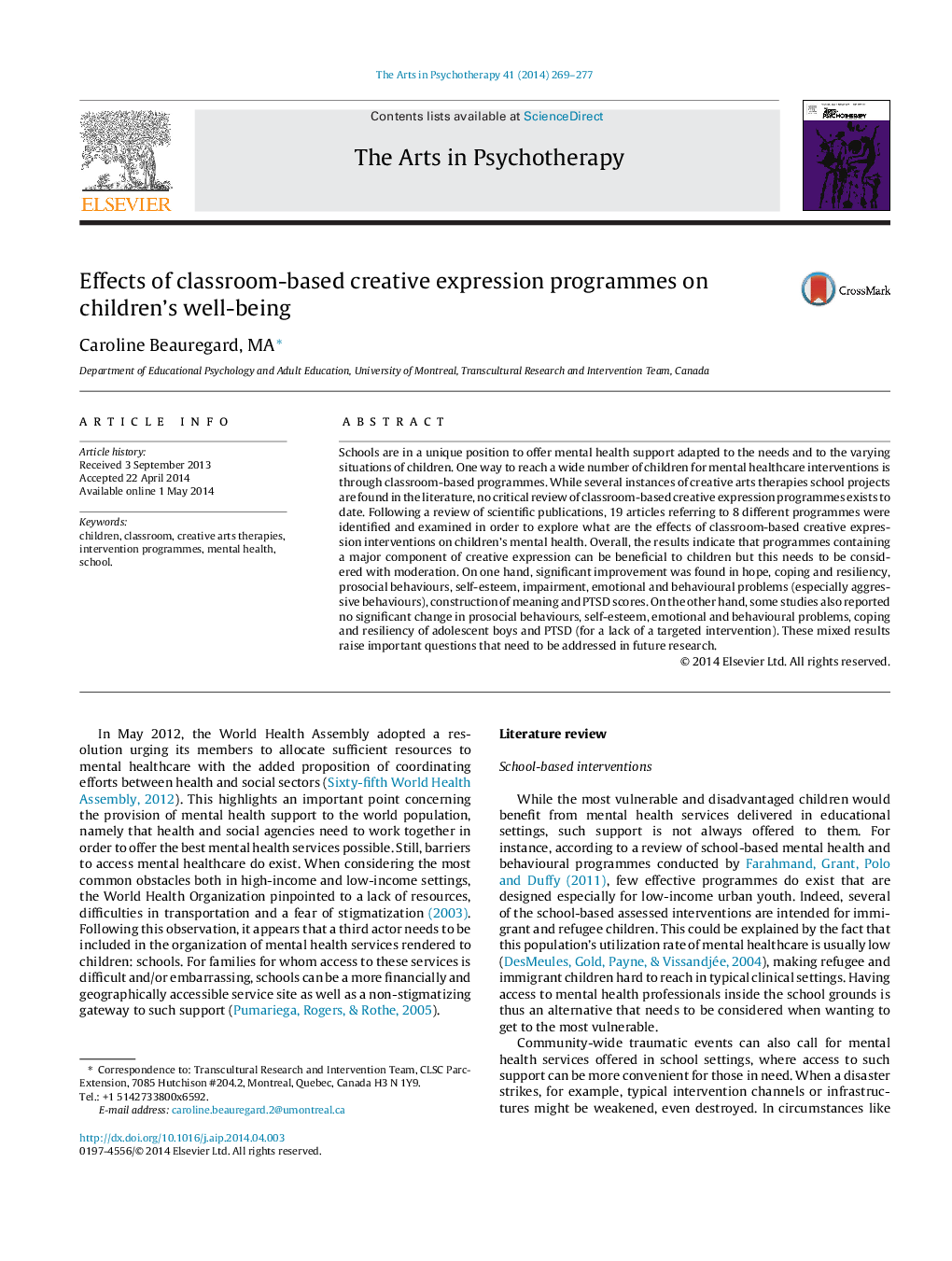| کد مقاله | کد نشریه | سال انتشار | مقاله انگلیسی | نسخه تمام متن |
|---|---|---|---|---|
| 343589 | 617187 | 2014 | 9 صفحه PDF | دانلود رایگان |
• Classroom-based creative expression programmes have been used for diverse objectives and settings.
• Outcomes following interventions are generally positive although not always significant.
• Populational characteristics might influence the impact of such programmes.
• School-based research imposes some constraints that may influence the impact of a study.
• Cultural sensitivity is necessary both in intervention and study design.
Schools are in a unique position to offer mental health support adapted to the needs and to the varying situations of children. One way to reach a wide number of children for mental healthcare interventions is through classroom-based programmes. While several instances of creative arts therapies school projects are found in the literature, no critical review of classroom-based creative expression programmes exists to date. Following a review of scientific publications, 19 articles referring to 8 different programmes were identified and examined in order to explore what are the effects of classroom-based creative expression interventions on children's mental health. Overall, the results indicate that programmes containing a major component of creative expression can be beneficial to children but this needs to be considered with moderation. On one hand, significant improvement was found in hope, coping and resiliency, prosocial behaviours, self-esteem, impairment, emotional and behavioural problems (especially aggressive behaviours), construction of meaning and PTSD scores. On the other hand, some studies also reported no significant change in prosocial behaviours, self-esteem, emotional and behavioural problems, coping and resiliency of adolescent boys and PTSD (for a lack of a targeted intervention). These mixed results raise important questions that need to be addressed in future research.
Journal: The Arts in Psychotherapy - Volume 41, Issue 3, July 2014, Pages 269–277
